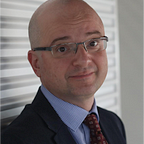Inside the Cell (Part 2/3)
A brief history of understanding our tiny building blocks.
The rapid development of genetics was precisely what undermined Warburg’s “cellular-energy-and-metabolism-centred” theory of cancer. Important evidence began to emerge on the changes in the genetic code of the cell that could act as the most proximal event in cancer development. Then, the “switch” to anaerobic metabolism would come as a secondary event.
Initially, a competing theory to that of Warburg was that viruses may be culprits that lead to malignant transformation of a host’s cell by inserting their DNA into the cells of the host. This hypothesis emerged after Peyton Rous was awarded the Nobel Prize in Medicine in 1966 for the discovery of viruses that could cause tumours — retroviruses. Then, David Baltimore, Renato Dulbecco, and Howard Martin Temin were awarded the Nobel Prize in 1975 for proving the interaction between such viruses and genetic material in the cells of the host. In the early 1980s, Harald zur Hausen managed to find DNA segments from Human Papilloma Virus (HPV) types 16 and 18 in cells from about 70% of cervical cancer samples. This later increased to more than 99% when further types of HPV were analysed. Based on these findings, an effective vaccine was developed to prevent cervical cancer, leading to the Nobel prize for zur Hausen in 2008.
The progress made by Rous, and later Baltimore, Dulbecco and Temin, led to a hypothesis that viruses carry “cancer-inducing genes”, that were called “oncogenes”. It also assumed that viruses…
